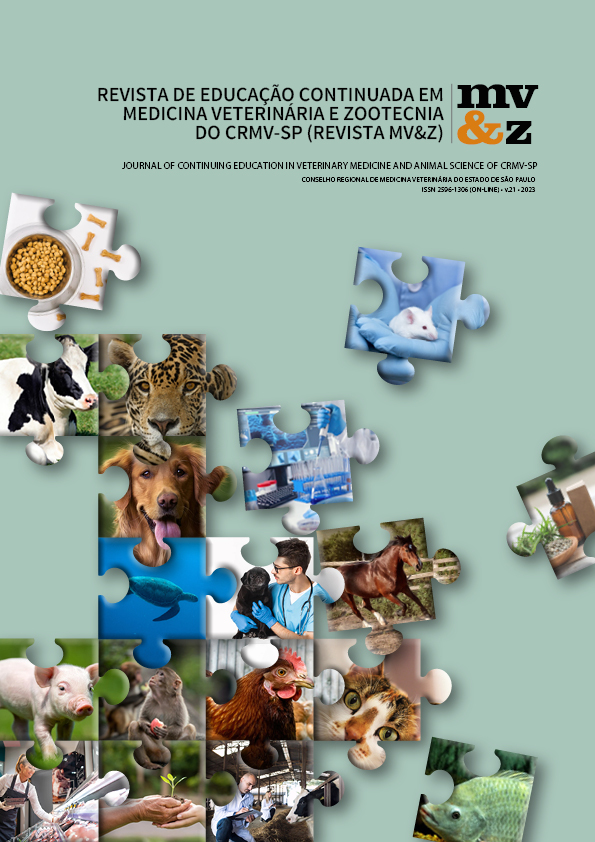Cetose subclínica e seu impacto no desempenho reprodutivo de vacas leiteiras: revisão de literatura
Conteúdo do artigo principal
Resumo
A cetose, conhecida também como acetonemia, é um distúrbio metabólico que afeta principalmente vacas leiteiras de alta produção. A elevação anormal de corpos cetônicos nos tecidos e fluidos corporais do animal ocorre devido a um déficit de energia. A quantidade de alimento/nutrientes ingeridos não é suficiente para suprir a demanda corporal do mesmo, assim como a eficiência reprodutiva que está diretamente ligada à saúde, condição corporal e sua capacidade de produção. Animais de alta produção possuem um desafio muito grande de aumentar a produção a cada lactação, com isso, estão susceptíveis a mudanças metabólicas, entre elas a cetose, clínica ou subclínica. Tal enfermidade ocorre devido a uma má adaptação metabólica do animal a sua nova condição de lactante. A elevada incidência de doenças uterinas no pós-parto de vacas leiteiras é responsável por inúmeros prejuízos para a atividade, principalmente pela redução da eficiência reprodutiva das vacas acometidas por infecções. Contudo, visto que a cetose subclínica prevalece nos rebanhos leiteiros de alta produção, o objetivo desta revisão de literatura é apresentar a patogenia e os efeitos que esse distúrbio metabólico têm sobre a reprodução das vacas de aptidão leiteira no após o parto, utilizando de indicadores como taxa de prenhez, taxa de concepção, retorno a ciclicidade, intervalo entre partos e intervalo entre parto e estro.
Detalhes do artigo
Seção
1. Autores mantém os direitos autorais e concedem à revista o direito de primeira publicação, com o trabalho licenciado sob a Creative Commons Atribuição-NãoComercial-SemDerivações 4.0 Internacional
2. Autores têm autorização para assumir contratos adicionais separadamente, para distribuição não-exclusica da versão do trabalho publicada nesta revista (ex.: publicar em repositório institucional ou como capítulo de livro), com reconhecimento de autoria e publicação inicial nesta revista.
3. Autores têm permissão e são estimulados a publicar e distribuir seu trabalho online (ex.: em repositórios instituicionais ou na sua página pessoal) a qualquer ponto antes ou durante o processo editorial, já que isso pode gerar alterações produtivas, bem como aumentar o impacto e a citação do trabalho publicado (Veja O Efeito do Acesso Livre);
